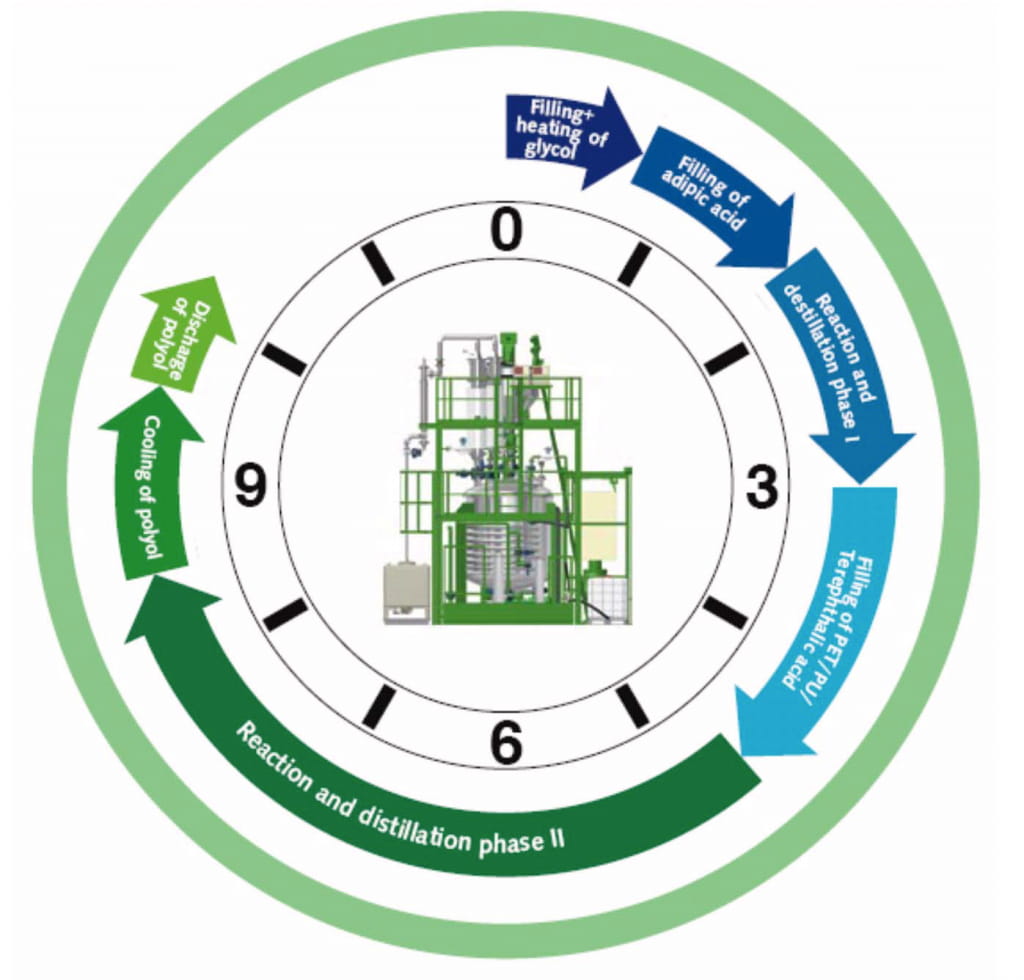Why Chemical Recycling?
- Demand for plastics is strong and growing: If current trends continue, global demand for plastics is forecasted to triple by 2050. At the same time, there may be more plastics than fish in oceans by 2050.1
- In 2018, nearly 42 million metric tons of plastics were produced in North America, driving revenues of $47 billion.1
- There are an estimated 34+ million metric tons of plastics landfilled or incinerated in the U.S. and Canada each year. This costs communities more than $2.2 billion in disposal fees.1
- In the U.S. and Canada, current recycling infrastructure recovers less than 10% of post-consumer plastics and the supply of recycled plastics available to meet demand is stuck at 6%.1
- Current infrastructure and technologies are limited in their ability to transform all of the diverse types of plastics used today into high-value feedstocks that compete with prime, or virgin, materials.1
- The good news is that innovative technologies exist to solve these challenges. These technologies including Chemical Recycling; a conversion technology, are transforming waste plastics into building blocks for new materials.
- Analysis indicates that with these technologies fulfilling market demands, there would be a potential revenue opportunities of $120 billion in the U.S. and Canada alone.1
- Furthermore, there are environmental benefits from recycling waste plastics back into a myriad of useful products, including reducing or avoiding environmental pollution, significant amounts of CO2 emissions and potentially hazardous chemical pollutants.1
1. Closed Loop Partners, “Accelerating Circular Supply Chains for Plastics,” 2019.
At UniSol we feel responsible for the future of our environment and ultimately our planet, therefore we care for the recycling of plastics in the best way possible.
By Chemical Recycling it’s possible to convert some plastics and polymers to the monomers and oligomers which can be consequently used in production of Up-cycle polymers.
With their decades of experience and academic knowledge, H&S Anlagentechnik has developed different methods to recycle PET and PU to produce Polyester Polyols that can be used in production of rigid and flexible PU foams.

H&S Anlagentechnik
H&S has been founded in 1987 in Germany. H&S is one of the leading suppliers of equipment and technologies for Polyurethane processing industry.
Their equipment and technologies are built for efficient, safe and environmentally secure storing, dosing, mixing formulating and processing of Polyurethanes.
For the last few years H&S has developed the technologies to chemically recycle the post consumer or production waste of soft and rigid PU foams and PET scrap and break the polymer chains into oligomers to further convert them to Polyester polyols.
These Polyols can be used to produce rigid and flexible PU foams.
Flexible/Rigid PU to Polyol
Post consumer or production waste of flexible/rigid PU foam can be chemically recycled and produce high quality products.
H&S has developed a technology of generating stable recovered polyols based on an optimized Acidolysis method.
The final product is a recovered polyol, which can substitute a part of the conventional polyol for flexible/rigid foam production without quality loss.
The recycling process based on H&S technology enables to convert slabstock foam residues into polyol for at least 50 cycles without considerable influence on the chemical and mechanical properties of the recycled polyol and resulted PU foam.
Advantages of H&S method compared to other chemical recycling technologies (recovered polyol properties):
- Appropriate hydroxyl number for flexible PU foam production
- No blocking of the catalysts reactivity
- Good reactivity of the resulted polyols
- No primary aromatic amines
Types of PU foam recyclable with H&S technology
- Conventional foam (for application in conventional foam)
- Conventional foam with filler (CaCO3) (for application in conventional foam with CaCO3)
- HR-foam with SAN polyols (for application in HR or conventional foam)
- Viscoelastic foams (for application in viscoelastic or conventional foam)
The process sequences are shown in the below diagram:

PET to Polyol
Post consumer or production waste of PET (both bottle and fibre grades) can be chemically recycled and produce high quality products.
The final product is a high quality aromatic polyester polyol, excellent for the usage in rigid polyurethane foam.
The technology is based on the mature and stable process at ambient pressure based on Glycolysis method.
Advantages of H&S technology:
- Versatile technological support of the whole project (know-how, development of recipes etc.
- High quality of the end product due to special distillation technology.
- Reproducibility.
- Not dangerous production: no explosion danger, no high pressure.
The raw material can be any of the following forms;
- Post consumer flakes
- Preform out of spec
- Production waste
- Dust
- Fibers
The process sequences are shown in the below diagram:


Final Product
The final product is in a form of liquid Aromatic Polyester Polyol.
The product can be used to following products:
- PIR insulation panels with flexible facer
- Sandwich Panels
- Spray PU
- Refrigerators’ Insulation
- OCF
- Pipe-in-pipe Insulation
- PU coatings
- Elastomers
- Adhesive and Sealants
